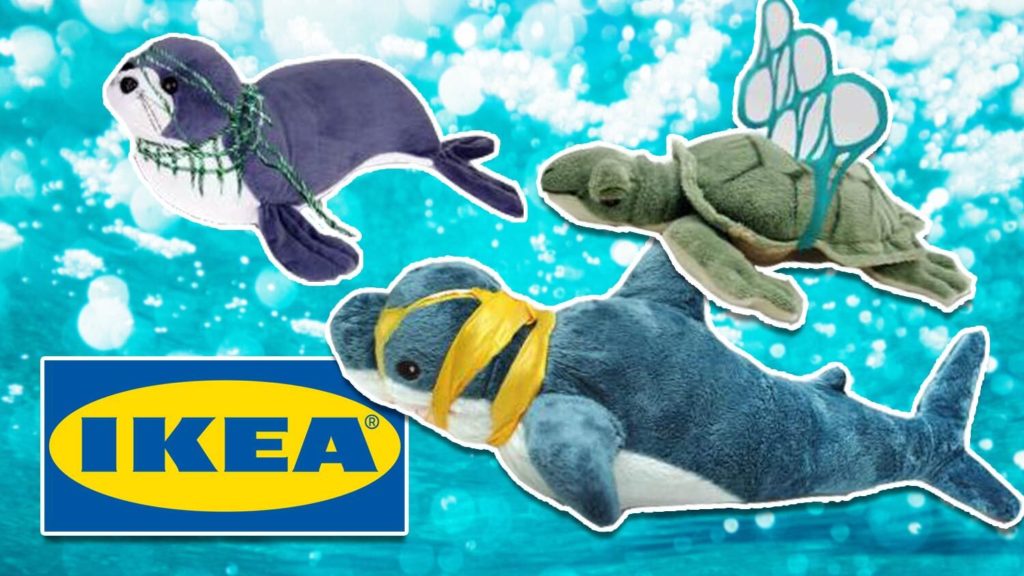Five students from the MADS school of advertising in Moscow have created fake IKEA toys to raise awareness for plastic pollution.
The toys are part of a fictitious campaign, dubbed Plastic Surgery. It aims to decrease the amount of plastic that makes its way into the world’s oceans. The campaign also aims to encourage Swedish furniture giant IKEA to minimize its plastic use.
The fake toys resemble the stuffed animals IKEA currently sells. However, they carry an important visual message. The toys represent the sea animals that suffer due to plastic pollution.
For example, one of the toys is a stuffed sea turtle. It’s entangled in the plastic that holds together a six-pack of soda cans. Another features a seal wrapped in what appears to be plastic netting.

The Problem With Plastic Pollution
According to the marine conservation organization Surfers Against Sewage (SAS), plastic accounts for 60 to 90 percent of all marine debris.
In 1950, 2.5 billion people produced about 1.5 million tons of plastic. In 2016, the global population, which was more than seven billion people, produced more than 320 million tons of plastic. SAS expects this figure will double by 2034.
“Plastic pollution has got such huge impacts on marine wildlife and wildlife at large in our environment. What we often see through the media is the tragic stories of the really enigmatic sea creatures that are killed by plastic pollution. Whether that’s by eating it or becoming entangled in it and being weakened and either drowned or compromised towards death,” Hugo Tagholm, Chief Executive of SAS, told LIVEKINDLY.
He explained that damaging activities like industrial level fishing are also wreaking havoc on marine life. But he says the average person can make a difference by simple lifestyle changes.
“I think we can all think about our ethical and environmental footprint. And try and do more good for people and the planet. You might become vegan or vegetarian. [Or] you might adopt a more flexible diet. You might make more choices about what you’re buying. [Buy] less plastic things, use your reusable mug, your bamboo toothbrush, whatever it may be. You’re trying to compose a life that has less harm to it,” he said.
Tagholm says the students’ IKEA campaign, albeit fictitious, is a terrific way to raise awareness about the issue of plastic pollution.
“There’s a juxtaposition around this fluffy, cuddly animal that kids love and that they want to take home with them. And that animal being, of course, trapped in disposable, single-use plastic. So it tells a strong story and juxtaposes that sweet feeling a child might have about that animal and that toy with the huge threat to our environment,” he explained.


